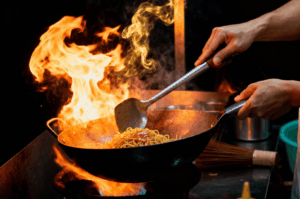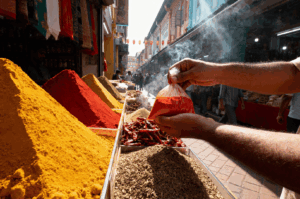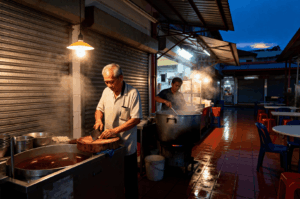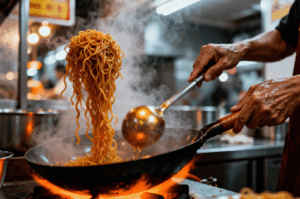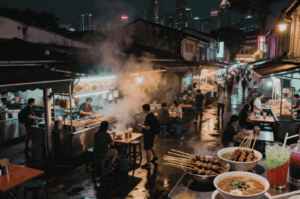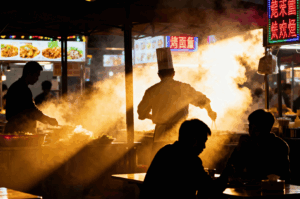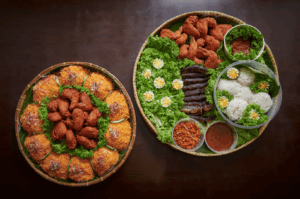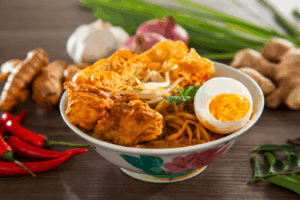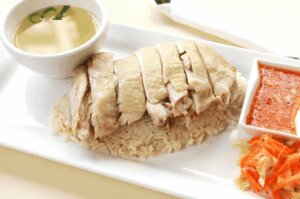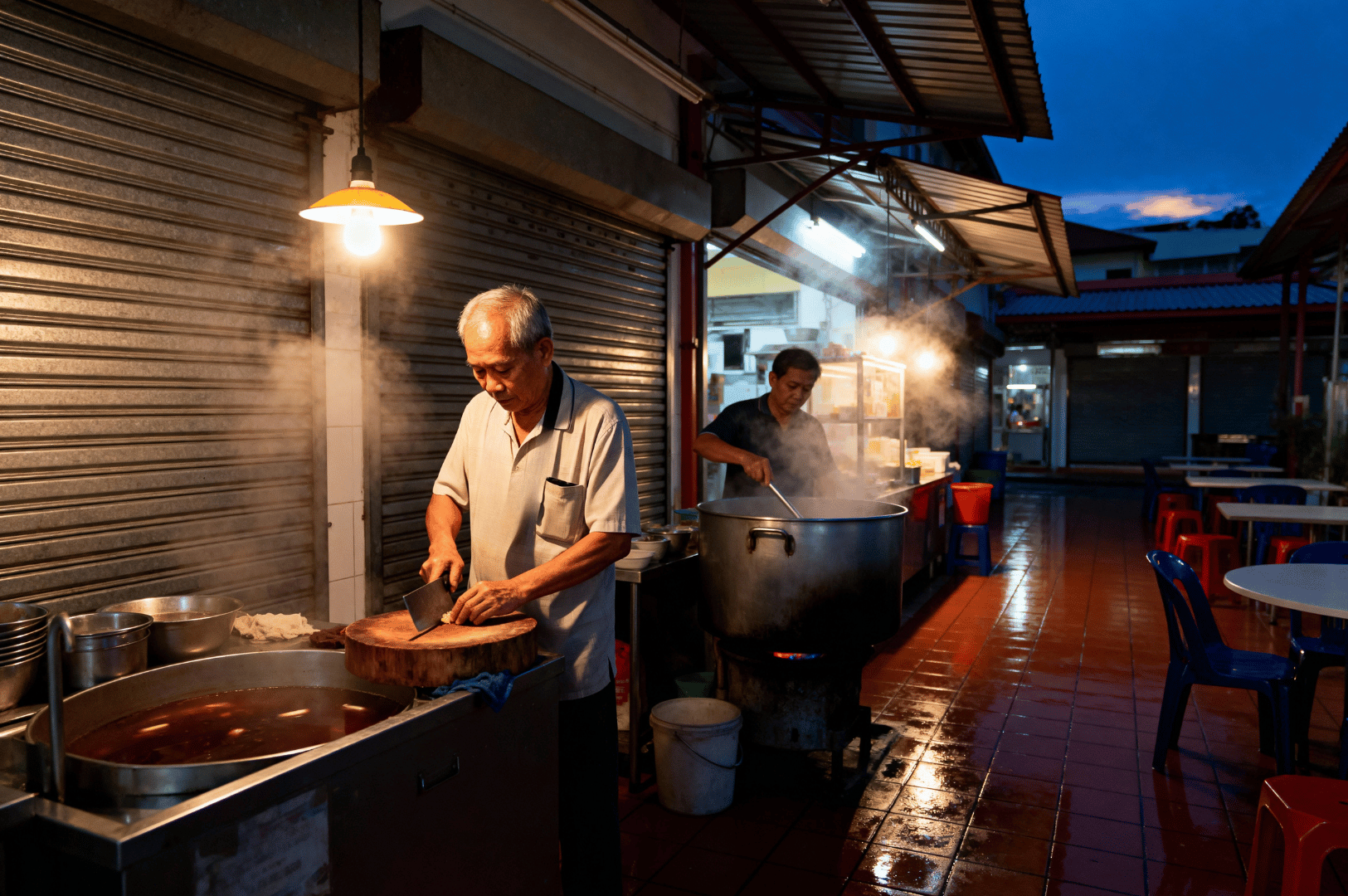
Long before the city awakens, a deep dedication to Singaporean food culture is already stirring within Maxwell Food Centre. While most of Singapore sleeps, a silent ritual begins. Here, in the quiet, pre-dawn hours, the island’s culinary artisans are at work. This is the origin story of Singapore food, a narrative that starts not with the lunchtime crowds but with the focused, methodical hawker stall preparation that happens in the dark. It is a testament to the passion that makes this food incredibly tasty.
The Pre-Dawn Atmosphere
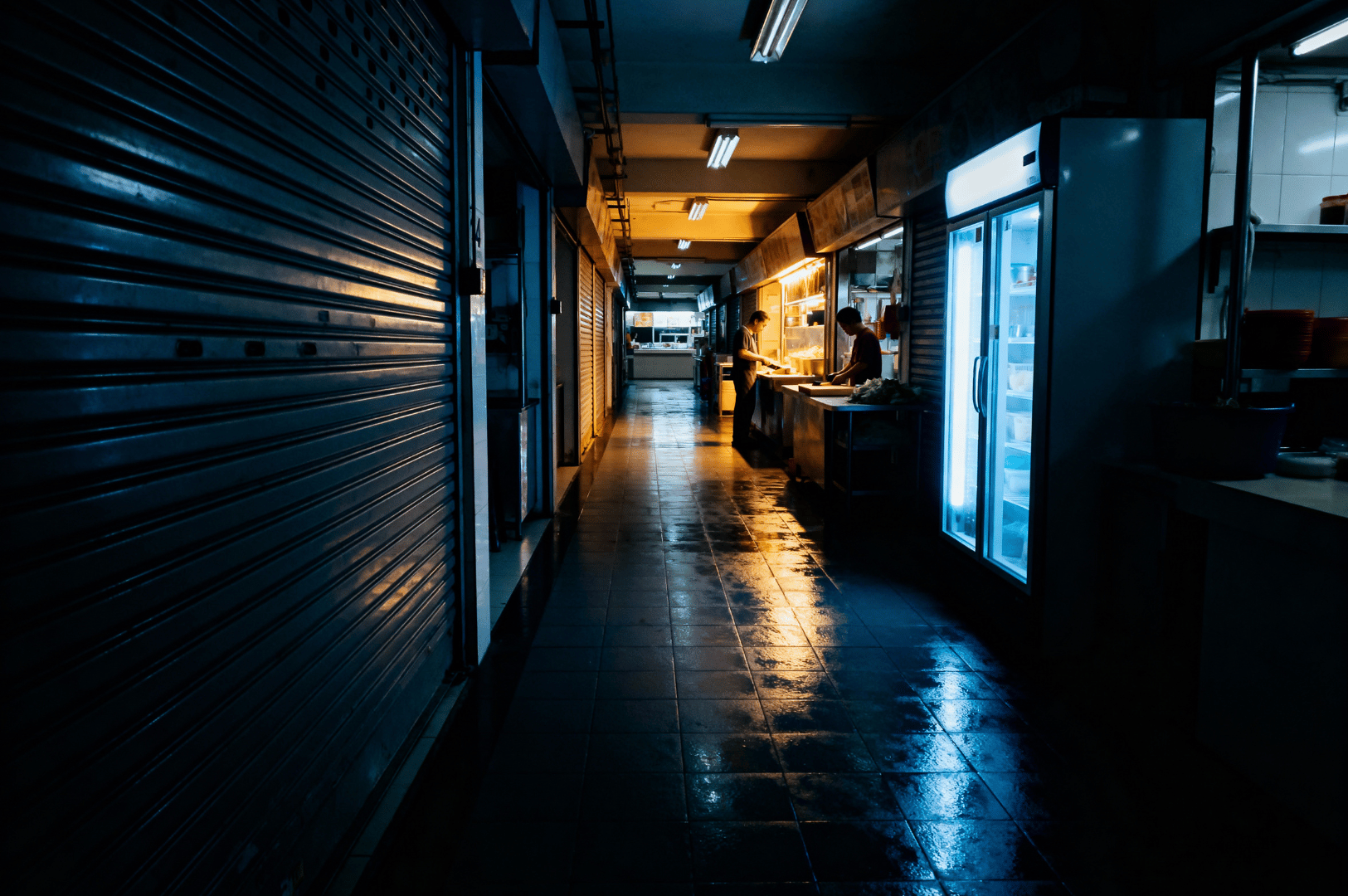
At 4 AM, the energy of a hawker centre like Maxwell or even Lau Pa Sat is transformed. The air is cool, carrying the faint scent of recent cleaning. The only sounds are the rhythmic clatter of shutters and the gentle hum of refrigerators. Light spills from a few stalls, creating pockets of warmth where the first stall owners begin their meticulous work. These pre-dawn hawker rituals are a shared, unspoken tradition. It's an environment of intense focus, where every chop and stir is a deliberate step toward creating a perfect meal for the office workers and local Singaporeans who will arrive in a few hours.
The Rituals of Preparation
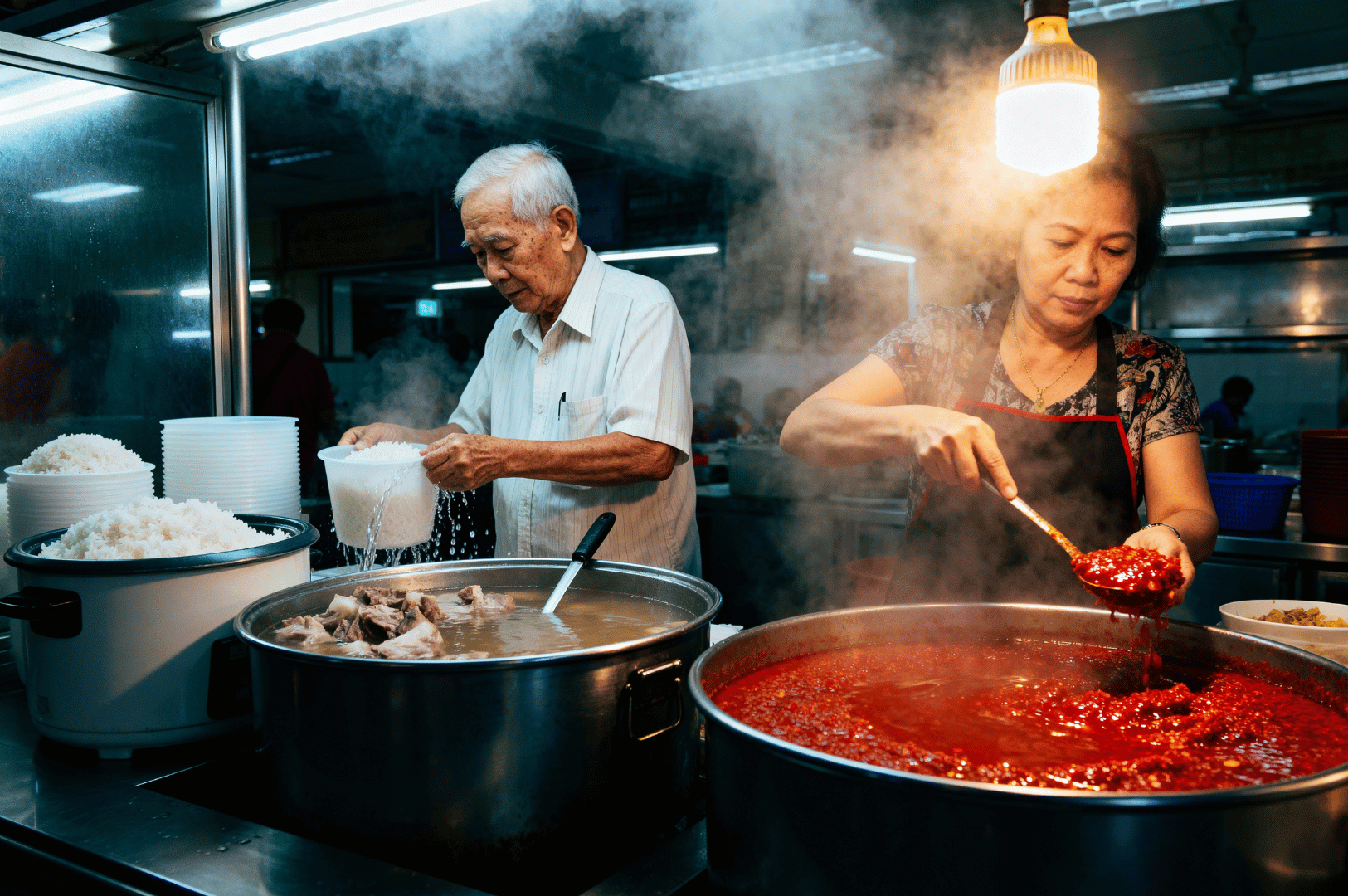
Each hawker has a unique ritual, a sequence of tasks perfected over generations. Consider the preparation for one of Singapore’s most popular dish options: chicken rice. The process begins not with the fried chicken or roast pork, but with the rice itself. Pails of grains are washed until the water is clear. The steamed rice is then cooked in a rich, savory broth infused with pandan leaves and ginger, ensuring every grain is fragrant and flavorful. This commitment is why this meal remains a favorite.
Nearby, another stall owner prepares for a day of selling bak chor mee. The process involves assembling various components: yellow egg noodles, minced pork, fish balls, and a signature sauce often made with dark soy sauce and a hint of vinegar. The pork bones have been simmering for hours, creating a rich soup to accompany the noodles, which are often served dry. This dish, a staple in food courts across the island, requires hours of unseen labor.
Other hawkers are busy with their own specialties. One might be mixing a batter of rice flour and water for steamed rice cakes, a beloved breakfast item. Another could be preparing the sambal chili that will accompany their nasi lemak, ensuring the perfect balance of spice and sweetness using ingredients like palm sugar. This is the heart of what makes hawker centers uniquely Singaporean.
From Raw Ingredients to Culinary Masterpieces
These early hours are essential for quality. They allow for the slow simmering of broths, the careful marination of meats like char siu, and the meticulous creation of sauces. Whether it’s the coconut milk and coconut cream for a laksa or the finely minced meat for a noodle dish, quality cannot be rushed. The preparation for side dishes is just as important, from slicing chinese sausage to preparing hard boiled eggs.
This dedication applies to a wide array of hawker fare. Think of the famous chili crab, where the sauce is a complex blend of flavors, or the simple perfection of kaya toast, served with a slab of butter and a cup of coffee with condensed milk. Even dishes like carrot cake (a savory stir-fried dish made from rice cakes) and oyster omelette require precise preparation of their core ingredients, from the fish paste to the chili oil. The stall owners are guardians of these recipes.
Guardians of a Cultural Legacy
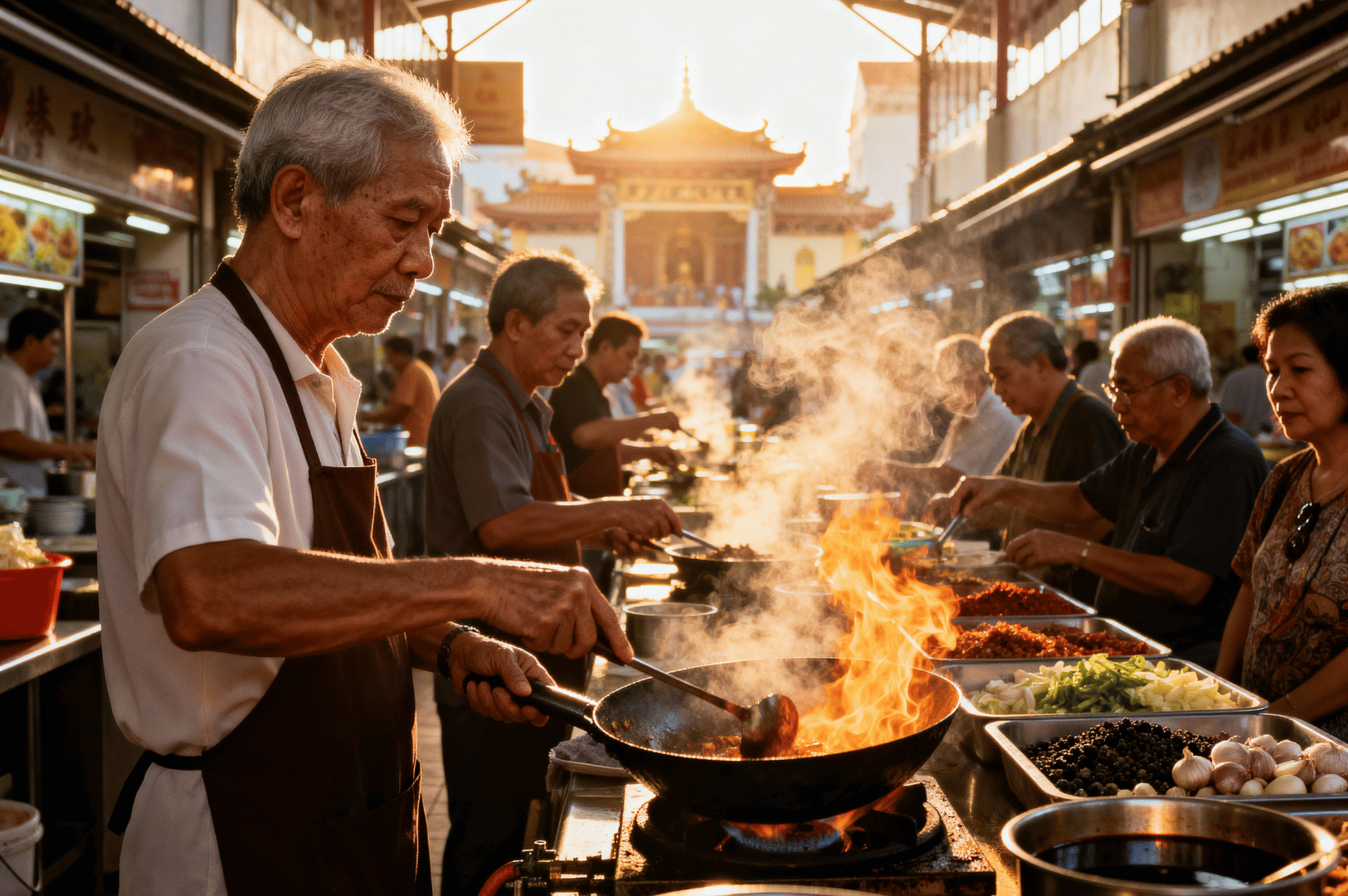
The work of these hawkers is about more than just food. It is a living expression of Singapore’s heritage, a connection to Southeast Asia and its diverse culinary influences. From Peranakan dish preparations to recipes with roots in the Middle East, the hawker centre is a melting pot. The Singapore government has recognized this, and the culture is celebrated by all.
These food courts are where people from all walks of life gather to eat their favorite meals. They are central to the nation's identity. The hawker’s commitment to traditional methods, like stir-frying in a seasoned wok or using black pepper and soy sauce to build layers of flavor, is an act of cultural preservation. It’s what keeps dishes served on rice noodles or bee hoon tasting just as they have for decades.
The Unseen Heart of Singapore Food
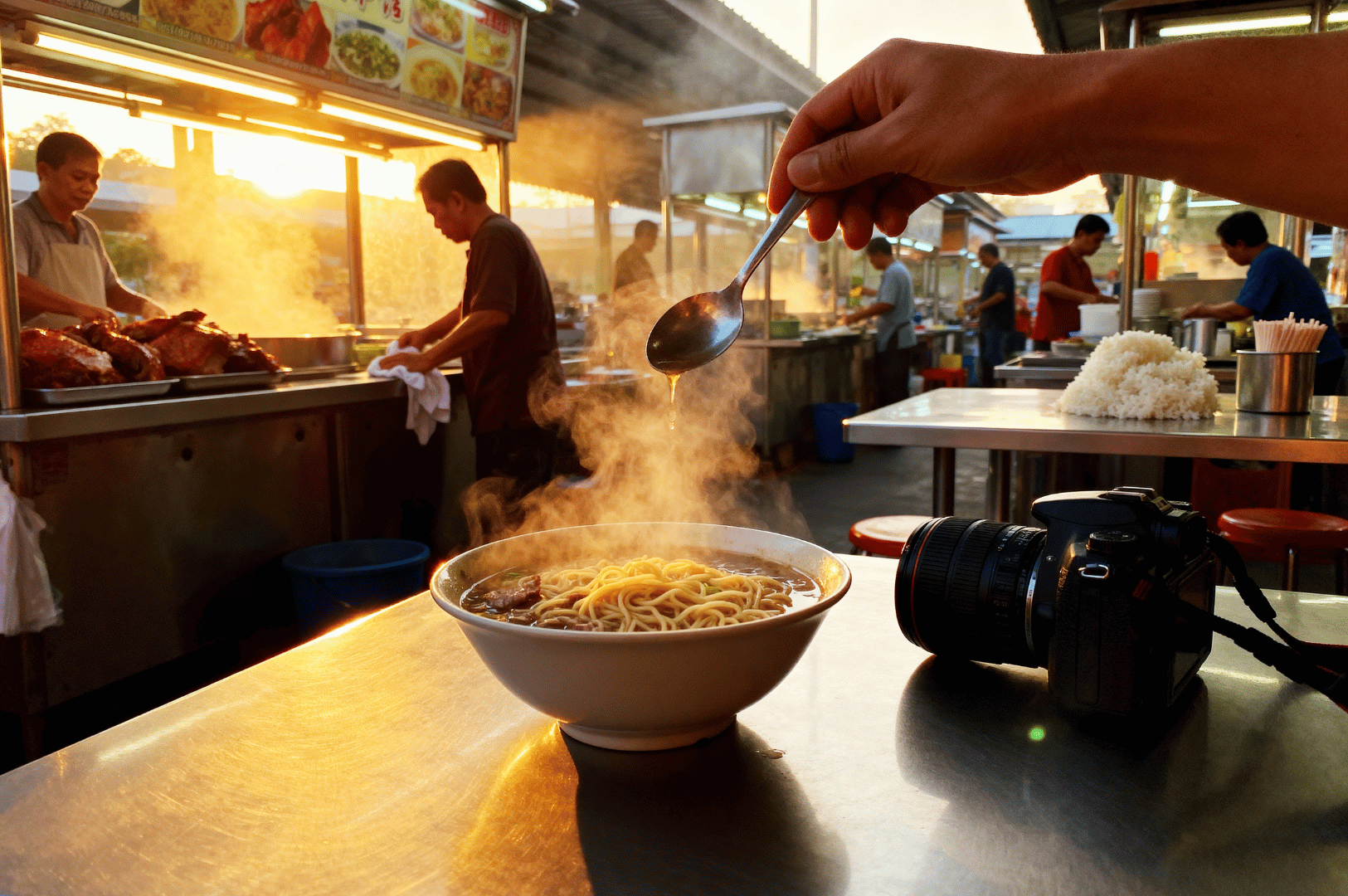
The next time you enjoy a meal at a hawker centre, whether it's a bowl of soup with fish balls, some roast duck over rice, or even a dessert of red beans with red bean paste, remember its origin. Your meal is the result of a process that started in the quiet, dark hours of the morning. The incredible flavors that excite your taste buds are a direct result of the unseen dedication of the hawkers.
This hidden world of pre-dawn preparation is the true heart of Singapore's food scene. It’s an authentic story of passion and craftsmanship that enriches not just the food we eat, but the cultural fabric of the entire nation. It’s a ritual that deserves our deepest appreciation and respect.
To explore more of this culture through a visual and culinary lens, check out our food photography guide to hawker life or uncover Singapore’s late-night eats in our after-dark dining guide.
Wok Hei Photography: Capturing the Forbidden Pleasure of Char Kway Teow
October 24, 2025
In the heart of Singapore, amidst the symphony of sounds and smells that define its hawker centres, a culinary performance unfolds. The creation of char kway teow is a spectacle of fire and skill, a…
Little India Spice Photography: The Seduction of Senses on the Spice Trail
October 20, 2025
The moment I step into Little India, my camera feels like an extension of my senses. The neighborhood is a visual feast, a sensory overload that defines Singapore’s food scene. As a photographer dedicated to…
Pre Dawn Hawker Rituals: The 4AM Warriors at Maxwell Food Centre
October 17, 2025
Long before the city awakens, a deep dedication to Singaporean food culture is already stirring within Maxwell Food Centre. While most of Singapore sleeps, a silent ritual begins. Here, in the quiet, pre-dawn hours, the…
Hands & Heat of Singapore Hawker Culture: A Food Photography Guide
October 13, 2025
In the vibrant heart of Singapore’s hawker centres, a visual story unfolds with every dish. It’s a narrative told not just through rich flavor and enticing aromas, but through motion, heat, and the tireless hands…
Singapore Night Food: Secret Tours & After Dark Culinary Delights
October 10, 2025
Steam billows from a wok, catching the neon glow of a nearby sign before vanishing into the humid night air. The sharp, tantalizing aroma of chili, fried chicken, and garlic mixes with the sweet char…
Steam & Shadows: Singapore Hawker Culture and the Dance at Maxwell Food Centre
October 6, 2025
Under the roof of Maxwell Food Centre, steam and light collide, casting deep shadows across glowing stalls. This is the soul of Singapore hawker culture, where every hawker stall tells a story and every plate…
Exploring Chinese Malay Fusion Cuisine: The Forbidden Union of Peranakan and Nyonya Food in Singapore
October 3, 2025
Step into Singapore’s hawker centers or heritage shophouses in Katong and Joo Chiat, and you’ll discover Peranakan cuisine-a vibrant fusion of Chinese ingredients and Malay cuisine. This culinary tradition, also known as Nyonya food, combines…
Spice Route: Little India Food Photography
October 1, 2025
Little India is at the heart of Singapore food, famous for its vibrant hawker centres, diverse dishes, and energy that draws both locals and visitors. Anyone interested in Little India food photography will find a…
Golden Hour Food Photography: Mastering Natural Light with Laksa
September 26, 2025
Picture a bowl of fiery laksa, its surface shimmering with a glossy glow as aromatic steam curls into the air. For food photographers, that sense of warmth and shine is a magical moment to capture-a…
The Slow Seduction: Hainanese Chicken Rice
September 22, 2025
Before you even take a bite, a plate of Hainanese chicken rice beckons with its glossy, tender chopped chicken cut, silky chicken skin, and a mound of glistening, chicken fat-infused rice. The delicate fragrance of…

